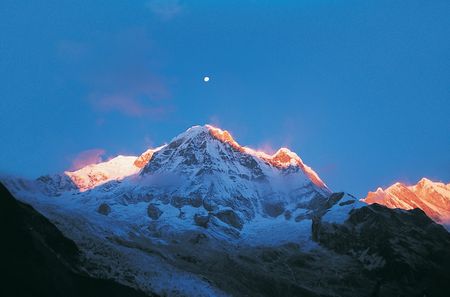
Right around the time I started working at ║┌┴¤│ď╣¤═°, the editor Mark Bryant assigned a story that required climbing Mount Everest. The office was always supercharged, but in the weeks leading up to KrakauerÔÇÖs May 1996 summit, the intensity at our morning meetings–which were always held in the hallway–ratcheted up 20 notches as we waited for the latest satellite update from Nepal.
Everyone who has read knows how that story ended. Love it or loath it, KrakauerÔÇÖs book has become a powerful force in contemporary literature, the standard by which adventure narratives are measured. In addition to being a gripping read, KrakauerÔÇÖs book also pushed the mountain further into the mainstream. Suddenly, the mountain's climbers were being scrutinized like Superbowl quarterbacks and everyone, it seemed, had an opinion about the wisdom and ethics of climbing Mount Everest.
As the letters editor during the era (the story first ran at 17,000 words in the ), I read letters of praise and sympathy, letters of vitriol, and letters asking the same question asked of George Mallory almost 100 years ago: “Why climb Everest?”
It took a few years for the mania to subside. I finally decided that unless I raised the cash, acquired the skills, and found the guts to summit Everest myself, IÔÇÖd refrain from making a judgment about anyone who did.
Fourteen years later, I still havenÔÇÖt found the guts, acquired the skill, or raised the cash to summit Everest–but I am starting starting the trek to Everest Base Camp this week, where IÔÇÖll be reporting for Expedition Hanesbrands (), a team led by the Canadian mountaineer , who will be attempting his second summit.
IÔÇÖll also be blogging for ║┌┴¤│ď╣¤═° Online, writing about life at base camp and checking in with the assortment of climbers starting out from the south side, the likes of whom include , a middle linebacker, and , a Washington-based climber attempting a solo speed ascent with no oxygen.
I canÔÇÖt deny that IÔÇÖve wondered what it would be like to see the view from 29,029 feet. IÔÇÖve certainly read about it. After Into Thin Air, I turned to by Walt Unsworth, the biographies of Sir Edmund Hillary and George Mallory, Reinhold MessnerÔÇÖs , Thomas HornbeinÔÇÖs , and by Frank Wells, Dick Bass, and RickRidgeway. Then I read ÔÇÖs , which analyzes the 2006 Everest season, the second-most fatal in the mountainÔÇÖs history. And, for comic relief, I laughed out loud at Contributing Editor ÔÇÖs July 2007 story
As Thomas Hornbein wrote in , his account of the 1963 American Mount Everest Expedition, ÔÇťEverest can be an overwhelming experience that is more complex and deeply felt than simply the exposure for several months to discomfort, exhausting effort, uncertainty, and awesome scenery.ÔÇŁ
If I make it to base camp (a place Fedarko described in ÔÇťHigh TimesÔÇŁ as, among other things, ÔÇťan absolute fricking blastÔÇŁ), IÔÇÖm hoping to get a measure of the mountainÔÇÖs complexity and grandeur. Then, IÔÇÖll pass it on to readers.
–Stephanie Pearson
Photo by Chistopher Herwig